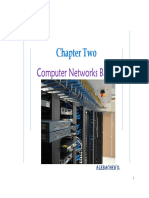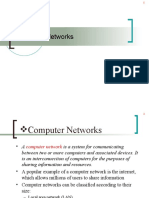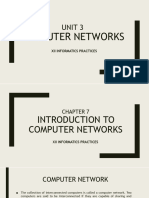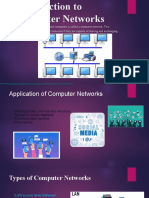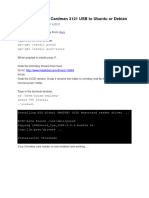0% found this document useful (0 votes)
20 views22 pagesNetwork
A network is a system of interconnected devices that communicate and share resources using protocols, with various uses including communication, data sharing, and remote access. Networks can be classified into types such as LAN, WAN, and MAN, and can have different topologies like bus, ring, and star. Key components of networks include Network Interface Cards (NICs), switches, routers, and various types of cables, each serving specific functions in data transmission and connectivity.
Uploaded by
shreyassuresh2004Copyright
© © All Rights Reserved
We take content rights seriously. If you suspect this is your content, claim it here.
Available Formats
Download as PDF, TXT or read online on Scribd
0% found this document useful (0 votes)
20 views22 pagesNetwork
A network is a system of interconnected devices that communicate and share resources using protocols, with various uses including communication, data sharing, and remote access. Networks can be classified into types such as LAN, WAN, and MAN, and can have different topologies like bus, ring, and star. Key components of networks include Network Interface Cards (NICs), switches, routers, and various types of cables, each serving specific functions in data transmission and connectivity.
Uploaded by
shreyassuresh2004Copyright
© © All Rights Reserved
We take content rights seriously. If you suspect this is your content, claim it here.
Available Formats
Download as PDF, TXT or read online on Scribd
/ 22













